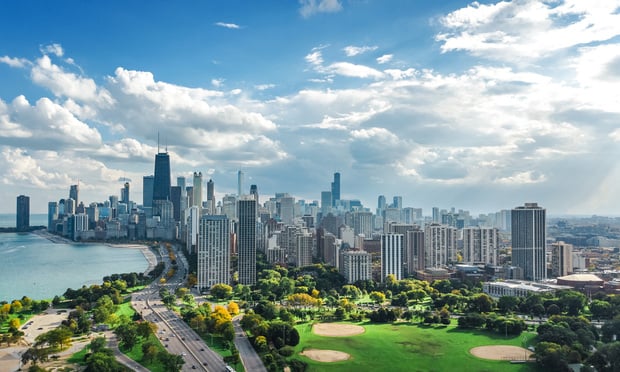CHICAGO-This year should further expand the use of sustainable design and development, according to Jones Lang LaSalle, as countries and companies the world over continue to collaborate on the best green practices for buildings. Dan Probst, chairman of energy and sustainability at the locally based company, says in a recent report that sustainable development is entering a new phase of greater alignment of public and private sectors.
For years, there have been reasons to not enact energy efficient building designs, Probst says. First, it was too costly, though he says that hurdle has been jumped, he tells GlobeSt.com. “It’s actually less expensive to design and build to the US Green Building Council LEED standards today,” he says. “Recycled building materials used to be rare, and cost more, but now they’re so common that they cost less. In other cases, the upfront cost of sustainable features is still higher, but the payback period is so short that it’s an easy call. A good example is lighting; if you need to retrofit a lighting system, LED may cost more but the savings in energy and labor costs are far greater than the upfront cost.”
We Also Recommend:
- 800 Brickell Office Tower Gets LEED Certification, New Tenants
- Government Buildings Go Green
- NJ Releases Final State Energy Master Plan
Second, governments are working more with companies on basic standards of green practices, Probst says. Five major US cities and two states have so far enacted energy performance measurement and disclosure policies, and nine more cities and states have bills in consideration. In Europe, energy performance certificates are required on buildings, and Australia is implementing similar requirements.
He also points to the $4 billion energy retrofit program Better Buildings Challenge, which was enacted in early December. The eight-year initiative includes $2 billion in energy upgrades of federal buildings, and another $2 billion of private capital promises to improve energy by 20% in buildings, with a goal of 1.5 billion square feet (JLL has pledged to work with clients on 98 million square feet).
This year should also be another record breaker for retrofitting to green standards, agreed the USGBC in a statement. The council said that for the first time, LEED certification in existing buildings passed that of new construction in December, with the help of buildings such as San Francisco’s Transamerica Pyramid and the second tallest building in the world, Taipei 101 in Taiwan, earning LEED Platinum. The total amount of square feet of LEED certified space now stands at about 1.7 billion, according to the organization, though there’s a long way to go.
“The US is home to more than 60 billion square feet of existing buildings, and we know that most of these buildings are energy guzzlers and water sieves,” said Rick Fedrizzi, president, CEO and founding chairman of the council, in the statement. “Making these existing buildings energy and water efficient has an enormous positive impact on the building’s cost of operations.”
Probst says he sees tremendous synergy possible between public and private partnerships to gain more ground in achieving energy and sustainability goals, both in the US and around the globe. “The commercial real estate industry has moved swiftly through initial phases of understanding the basic costs and benefits, implementing low-cost initiatives, exploring more sophisticated strategies and navigating around roadblocks,” he says. “Today, it is easier to see the opportunity for dynamic progress by cities, property owners and corporate tenants.”
Want to continue reading?
Become a Free ALM Digital Reader.
Once you are an ALM Digital Member, you’ll receive:
- Breaking commercial real estate news and analysis, on-site and via our newsletters and custom alerts
- Educational webcasts, white papers, and ebooks from industry thought leaders
- Critical coverage of the property casualty insurance and financial advisory markets on our other ALM sites, PropertyCasualty360 and ThinkAdvisor
Already have an account? Sign In Now
*May exclude premium content© 2024 ALM Global, LLC, All Rights Reserved. Request academic re-use from www.copyright.com. All other uses, submit a request to [email protected]. For more information visit Asset & Logo Licensing.








